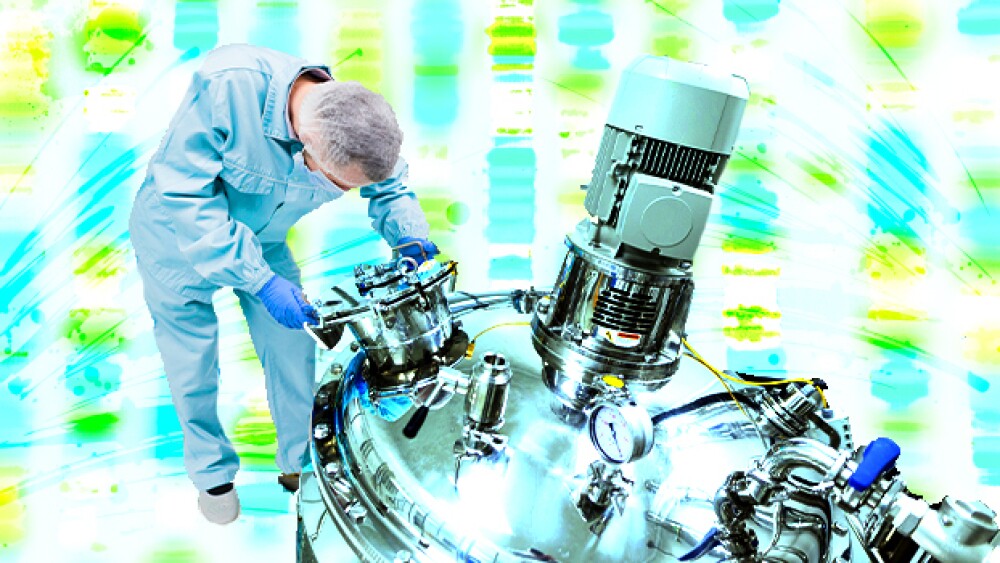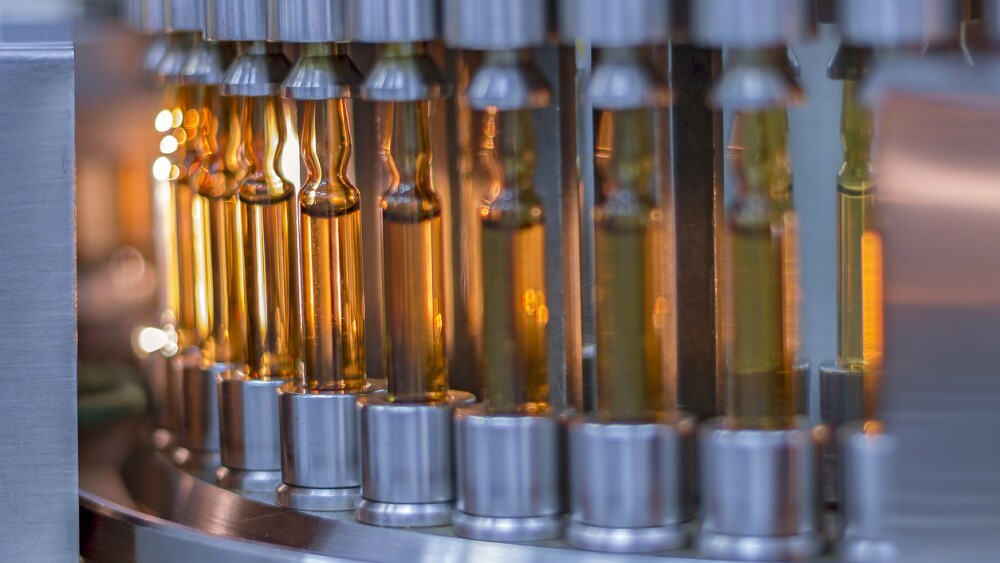Cell and gene therapy professionals gathered in Miami last month to discuss new manufacturing approaches for these up-and-coming treatments.
Pictured: Man working in biomanufacturing/Taylor Tieden for BioSpace
The increase in the number of FDA submissions and approvals of cell and gene therapies poses a challenge for biopharma manufacturing. The supply chain must be able to keep up with the demand for therapies manufactured using manual and labor-intensive processes.
Last month in Miami, cell and gene therapy (CGT) professionals gathered at Phacilitate’s Advanced Therapies Week to discuss manufacturing needs for one particular cell therapy that’s growing in popularity: CAR T cell therapies.
Rupa Pike, senior director and head of field scientists and strategic alliances for cell therapy at Catalent, told BioSpace she noticed several themes emerge at the meeting. First, she said, attendees were more excited than last year about increased investment in CGT. The global CAR T cell therapy market was valued at $2.75 billion in 2022 and expected to grow at a compound annual rate of 23.32% through 2030. In addition, advances in manufacturing technologies are allowing companies to develop more efficacious assays with a shorter turn-around time, Pike said.
Moving away from viral vectors to get genetic material into cells was another big talking point in Miami, according to Josh Ludwig, global director of global operations for ScaleReady, as was the shift in focus from autologous to allogeneic approaches, which have the potential to reduce costs by providing off-the-shelf varieties of CAR-T therapies.
“A focus in the industry for 2024 and beyond is to develop allogeneic therapies with durable responses and eliminate the use of virus, lentivirus and retrovirus in favor of nonviral gene editing techniques,” Ludwig said.
He added that collaboration within the industry will be key to create simple, standardized production processes. He said that the consensus at the meeting was that companies would share their approaches and successes with the field.
This would be a change, Ludwig explained, as companies have recently been very protective of their production processes—more so than when he started in the industry about 10 years ago. But he believes there is a middle ground where some basic principles about how to manufacture these cell therapies can be defined and shared openly.
“What ScaleReady plans to do and the CAR-T field is more receptive of in 2024 is trying to standardize the way we manufacture therapies,” Ludwig said. “There are building blocks to making those cells, and it should be standard that all companies use those building blocks, and each put their own unique target on them.”
Moving Toward Allogeneic, Off-the-Shelf Options
ScaleReady, whose manufacturing platform brings together cell culture, cell activation and expansion, gene editing and cell processing technologies, is partnering with Luminary Therapeutics and its allogeneic Gamma 2.0+ platform, Ludwig told BioSpace.
The partnership will develop a new CAR-T platform using a nonviral gene editing approach called a novel transposon-transpose system, Ludwig said. Partnering with ScaleReady can help Luminary generate good clinical data before they raise money and build a manufacturing facility, he added.
“What Luminary is looking to do is create an allogeneic bank where cells from one healthy donor can generate thousands of doses and and drive down the cost of treatment, which can be as high as $500,000,” Ludwig said.
In addition, he continued, “allogeneic therapies will provide more supply chain and scheduling stability to manufacturers and sponsors,” by producing more doses within a single lot release.
However, it remains to be seen if pharmaceutical-scale batches in the hundreds of thousands of doses can be produced by allogeneic cell therapy developers. Large-scale downstream processing and formulation and the filling of large quantities of cell product into drug product containers remain challenges for allogeneic manufacturing.
As allogeneic CAR-T manufacturing evolves, Ludwig said he sees a future where allogeneic and autologous cell therapies coexist to meet the needs of different patient populations. “When using modular, scalable and standardized tools and technology, the exact same facility and clean room layout is amenable to both autologous and allogenic cell therapy manufacturing,” he said.
Digitizing CGT Manufacturing to Reduce Cost
For the past two years, Ori Biotech has been giving industry partners such as Inceptor Bio, adtherabio and CTMC access to its proprietary CGT manufacturing platform prior to its launch later this year. Ori’s Lightspeed Early Access Program (LEAP) partners have been doing feasibility testing of the digital platform to accelerate progress toward scalable production of cell therapies.
Jason Foster, CEO of Ori, told BioSpace that the platform basically has three parts: a bioreactor system that physically produces cell therapies, an automation component to complete steps in the manufacturing process currently done manually, and a platform for real-time data analysis. He described this automated, digital approach as “industry 4.0” with the ability to capture data in real time.
Ori will be doing feasibility testing with 10 to 20 customers in 2024 and plans to deliver the product commercially toward the end of the year, Foster said.
“I’d like to see the industry make a commitment to adopting digital technologies at scale so that we can produce high-throughput products for a lot of patients,” Foster said. He added that he hopes the cost of producing these therapies will be significantly reduced over the next few years using platforms like the one Ori is developing.
Working on such new platforms will require new skills. Last year, the Alliance for Regenerative Medicine published a report that found the CGT workforce lacked the necessary technical skills in development and manufacturing. The workforce also lacked production skills, such as artificial intelligence (AI) and automation.
In its report, the organization said that education should include not just basic science but also information technology, AI and automation, data management and analysis and programming. Certificate programs could strengthen the skills of the current workforce to support the CGT sector until more workers are trained, the report said.
Charlotte LoBuono is a freelance science writer based in New Jersey. Reach her at lobuono2@verizon.net.





